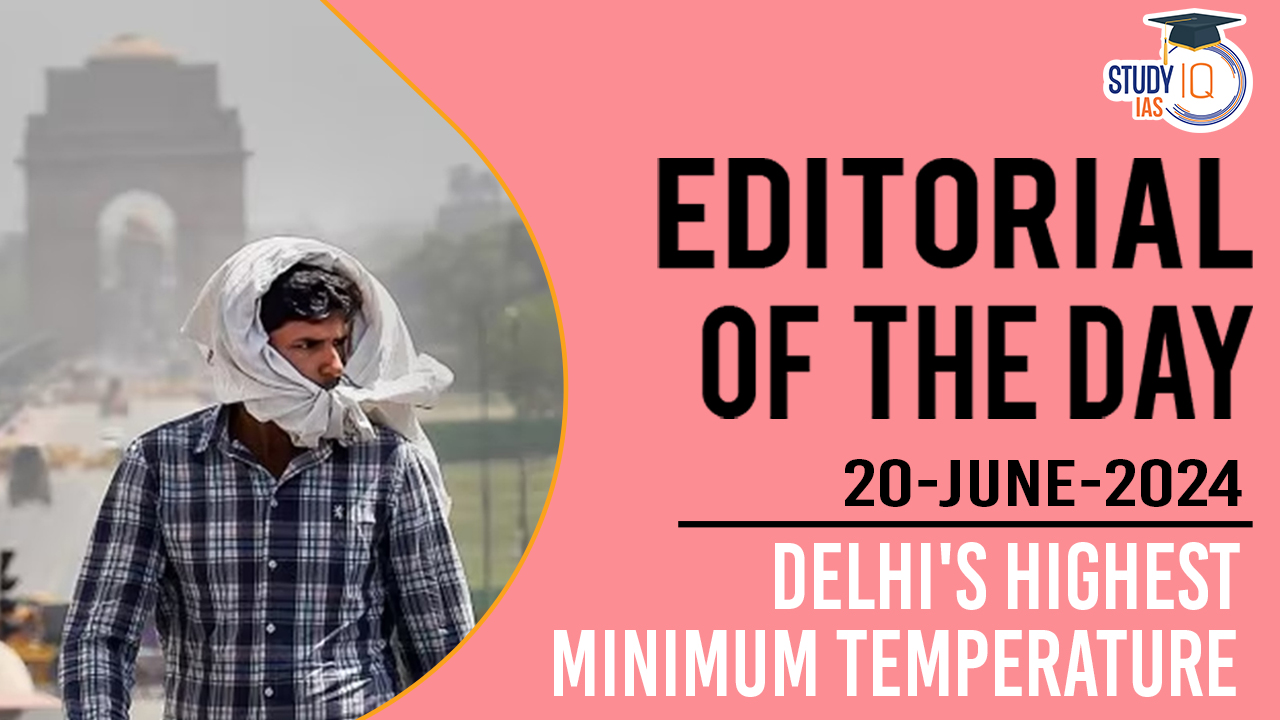Table of Contents
Context: Delhi experienced record-breaking minimum temperatures and prolonged heatwave conditions, exacerbated by climate change and urbanisation, posing severe health risks and highlighting the urban heat island effect.
Highest Recorded Minimum Temperature
- Delhi recorded its highest minimum temperature since at least 1969 on Tuesday, reaching a sweltering 35.2 degrees Celsius.
- This is concerning because it follows a period of already high temperatures, with seven heatwave days in June so far.
- The city has also experienced six consecutive warm nights, with temperatures not falling below 40 degrees Celsius since May.
Definition of Warm Nights
- IMD Criteria: A warm night occurs when the minimum temperature is 4.5 to 6.4 degrees Celsius above normal.
- A severe warm night is when the departure from normal exceeds 6.4 degrees Celsius, with the day temperature being 40 degrees Celsius or more.
- Delhi’s Example: Delhi’s minimum temperature was 8 degrees above normal at 35.2 degrees Celsius.
Why is this Concerning?
- The human body finds some relief from the heat during the night, typically between 3 am and 5 am.
- The lack of significant temperature drop at night due to the recent warm nights is a major health concern.
- Delhi and surrounding areas are experiencing a rain deficit of over 90% with highs consistently exceeding 40°C.
- Doctors report a rise in heatstroke cases despite the peak daytime temperatures occurring in late May. This is attributed to the lack of nighttime relief.
- Warmer nights make homes less effective for escaping the heat, forcing people outdoors during the hottest part of the day and into warmer spaces at night.
Data and Trends
- This is the first time since 2011 that Delhi has seen 12 days with a minimum temperature above 30°C in June.
- In 2018, another exceptionally hot June, there were 10 such days.
- The normal minimum temperature for this time of year in Delhi is 27.5°C.
Urban Heat Island (UHI) Effect
- The phenomenon where cities experience higher temperatures than surrounding areas, particularly at night is known as the Urban Heat Island (UHI) effect.
- This effect is exacerbated by urban structures such as buildings and roads made from heat-absorbing materials like concrete, which retain and re-emit heat.
- Reduced greenery in urban settings further intensifies this effect, especially during nighttime, making the environment significantly warmer compared to less urbanised, greener areas.
Findings
- Areas alongside the Ridge and greener Lutyens’ Delhi have lower temperatures compared to more urbanised pockets, with variations ranging from 2 to 4 degrees Celsius within a few kilometres.
- A recent study by the Centre for Science and Environment (CSE) analysing data from major Indian cities between 2001 and 2024 suggests slower cooling rates in recent years, contributing to warmer nights overall.


 Utkal Divas 2025: Odisha Foundation Day ...
Utkal Divas 2025: Odisha Foundation Day ...
 List of Military Exercises of India 2024...
List of Military Exercises of India 2024...
 GPS Spoofing and Its Impact in India: A ...
GPS Spoofing and Its Impact in India: A ...





















